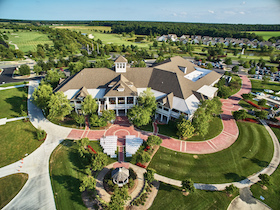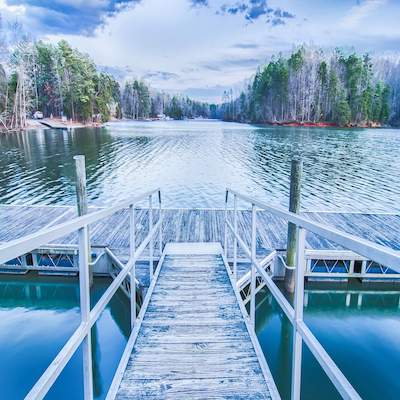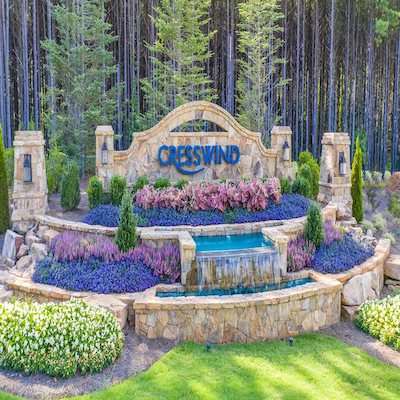Retirement Guide to Costa Rica – Part II
By Andrew Mastrandonas & Preston Gitlin
Retirement guide to Costa Rica
Note: This is the 2d of a 2 Part Article (see Part I of the Costa Rica Buyers Guide) The choices for a retirement home, condo, or land to build your dream home in Costa Rica are staggering. Do you want the beach? Do you like to play golf? Perhaps a community in one of the quaint mountain towns west and north of San Jose is for you? There are many communities and options with stunning scenery.
Costa Rican Expatriate Home
If you are considering a community for your retirement or vacation home, what factors should you consider? In Costa Rica, for example, many realtors and developers often quote they have “the best climate” or that their project is “convenient to_____” (fill in the blank). The point is that no one can tell you what you need, whereas you and your significant other should do your homework and decide what is best.
If you think you want to live in a community, below are some considerations to keep in mind:
• Do you prefer a planned, gated community where you are close to your neighbors, or do you prefer a more unstructured community with fewer amenities and in a more natural setting?
• Would you prefer to live among people similar to you or would you prefer to integrate into a community that is primarily composed of Costa Ricans? Perhaps a combination of foreigners and locals?
• Prefer to live in a home or a condominium?
• How big of a property do you want and can you afford to maintain it?
• Are you more interested in a community that has set home plans to choose from (or homes already built) or would you rather hire an architect and design and build a home?
Once you have narrowed down the type of community you might want, here are some factors to compare your top choices: *
Key Attributes:
* Location
* Buildable space
* Quality of infrastructure
* Type of residents
* Climate/weather
* Natural setting
* Community amenities
* Distance to town/services
* Price
* Investment quality
We recommend filling out a rating sheet for each property, using a scale of 1 (excellent) to 5 (poor) or NA. While there are other considerations, this is intended as a general guide so you won’t forget about the attributes you liked and disliked for specific developments, particularly if you are looking at many.
– Weather. Climate and weather are important in your decision-making. Costa Rica has many micro-climates and this will affect the weather where you decide to live. For example, at a given hour it might be sunny in town but just 2-3 miles away it could be raining. Because elevations change quickly here, so does the weather. It is important to consider the amount of rainfall; low, high and average temperatures; and wind at different times during the year. Many shady developers will try to show you their land at the right time of day or year and claim the weather is always terrific. Ask people in the area—those who have lived in the area for years—to give you the real scoop.
– Infrastructure. Another important consideration is the infrastructure provided by the developers of the community, particularly, electricity, water, and telephone service. Obviously, if you are going to buy a lot and intend to build a home you will need assurances in writing that at a minimum vital services will be provided to your “lot line” prior to closing on the property. Usually, it is the buyer’s responsibility to bring the lines inside the lot. Most architects or builders will help you get this done.
– Water. One of the key problems buyers are facing is lack of understanding as to where their water comes from. Many developers build wells and then tell their clients not to worry because everyone in the community will have access to water. But, who is going to ensure each member of the community chips in when the pump breaks, or when so many homes are built that the area needs a new pump? It is also possible that down the road, if your community’s water supply does not come from the local municipality, any shortage will be your problem. When deciding on a developer to trust, demand information about the proper water studies and municipal help they should have completed.
– Telephone. While telephone service is standard in most places it is possible that it will not be available immediately. In some areas, it may take many months, and indeed years, for telephone service. Fortunately, cellular service is readily available and inexpensive.
– Roads. In the U.S. we are used to paved streets. In Costa Rica, however, some planned communities don’t offer paved streets. Instead, many communities use lastre, a combination of hard rock and sand, which handles the affects of rain better. Lastre roads are actually quite nice, easy to maintain, and keep expenses low for both the developer and the residents of a community. Lastre roads can be troublesome if your developer is not experienced in creating roadways. Some developers put in lastre roads in the dry season just to see them washed away in the rainy season, and oftentimes, the residents of a community get stuck with the bill for new roads or repairs. How do you know, then, if the road put in by a developer is a good one? First, and foremost, keep in mind that the surface of the road is only part of the story. A pretty road with nice rock and sand will look good but if the developer hasn’t considered what’s around the road–or what will “attack it,” it may not last through the first rain of the season.
– Drainage. Consideration of rainfall and proper water drainage is critical. If the developer hasn’t put in suitable drainage, rain water may spill into the road and make a mess of it. So, when looking at a lot you potentially want to buy, talk to the developer about the roads and understand how they were constructed, how drainage is handled and what happens if the road needs repairs. Second, find out to what extent the developer has put drainage pipes under the road in areas that may require them, such as a small stream or spring near a road. Third, ask about the type of culverts and drainage pipes that are under the road—called “alcantarillas”—and how big they are. The alcantarillas need to be big enough to handle the anticipated water drainage. Finally, before buying a lot it wouldn’t hurt to go out to the property during a heavy rainstorm and see for yourself.
– Land Surveys. One of the most important issues to address is how accurate the survey work is for the property you are interested in. In our own experience we bought a large farm from a cost-conscious developer who had already hired his inexpensive surveyor to segregate the farm into smaller parcels. We later found out that the surveyor hadn’t properly surveyed the borders. If we had not caught his mistake, unknowing lot buyers would have bought land that they didn’t completely own! If you are not happy with the answers you getting, move on, as there are many other choices.
Sorting out the Great from the …
There are both terrific and poor communities in Costa Rica. You can learn a lot just by seeing the project, talking to people in the area, and learning about the types of people who have already purchased property there. However, it is important to ask many questions of the developer or sales person before you purchase.
Communities in Costa Rica are not unlike those you would find elsewhere. There are communities with high-rise condos and others offering low rise “garden style” homes. Some prefer larger tracts of land in former agricultural areas which generally have 5000 square meters (1.25 acres) to 7000 square meters (1.73 acres) of land, depending on local zoning requirements. Building space in agricultural projects is ample for single-family homes, guest houses, pools, etc. Many developments, built primarily for the local population, called “urbanizacion,” typically have smaller lots and homes.
Looking for real estate in Costa Rica is an adventure. However, it can also be much fun if you keep your eyes and ears open and go with your most important emotion—your common sense. Happy hunting!
Andrew Mastrandonas, a former airline executive and management consultant in the U.S., lives in Costa Rica where he owns a relocation tour company designed to provide an introduction to Costa Rica for retirees and others considering moving here. He also owns a bed & breakfast and writes about travel and community issues for the Tico Times. Andrew can be reached at bo****************@gm***.com. Preston Gitlin, President of CR Communities, a real estate development company offering ocean view properties in San Ramon, contributed to this article. Preston can be reached at pg*****@cr***********.com.





